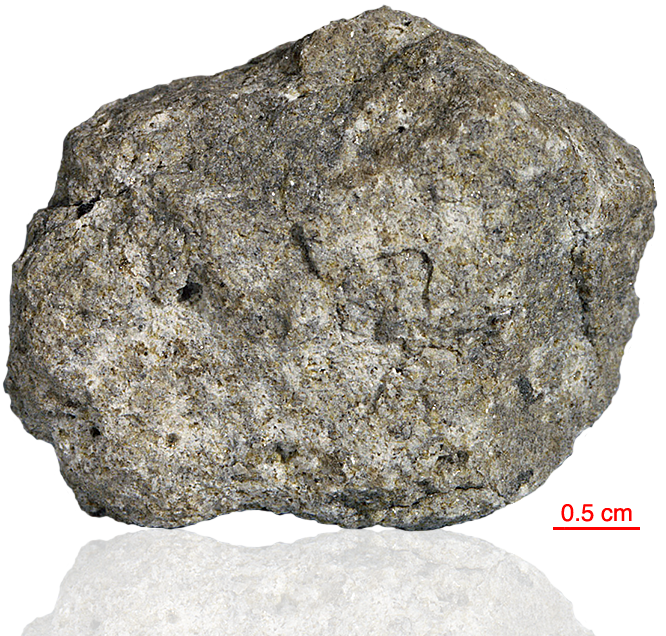
Fact sheet
67559 is a highly aluminous basalt with a fairly typical interlocking igneous texture indicating that it cooled from a liquid. However, Charles Meyer in his Lunar Compendium entry for this rock considers it to be an impact melt. Plagioclase content of the rock is 75-83%. Pyroxene is the only other major phase (14-20%). Olivine, troilite and metallic iron are the minor constituents.
The sample weighed 32.84 grams before analysis and has been dated at 3.76±0.04 (Rb/Sr).
Further details of this and other Apollo samples are here: http://curator.jsc.nasa.gov/lunar/
The Apollo 16 landing site was in the hilly region around Descartes crater in the lunar highlands. The landing spot was chosen to allow the astronauts to gather geologically older lunar material (Descartes Formation and the Cayley Formation) than the samples obtained in the first four landings, which were in or near lunar maria.
The mission lasted 11.1 days, with a stay on the lunar surface of 71 hours. The crew were on the lunar surface for 20.2 hours during which they traversed approximately 27 kilometers and collected approximately 96 kilograms of samples.
Apollo 16 was launched on 16 April 1972.






